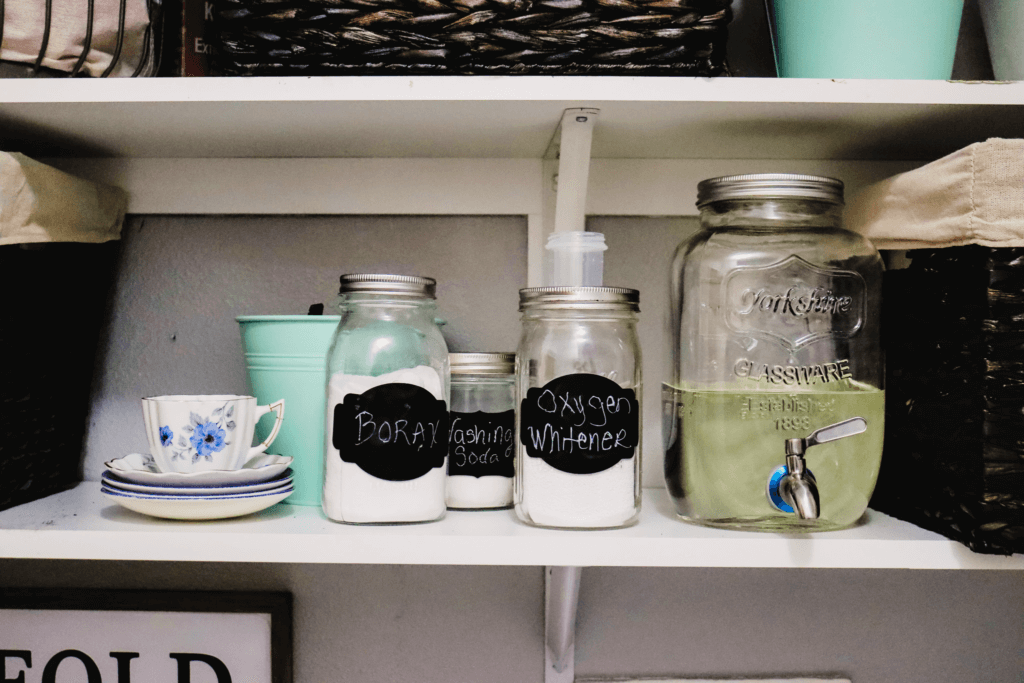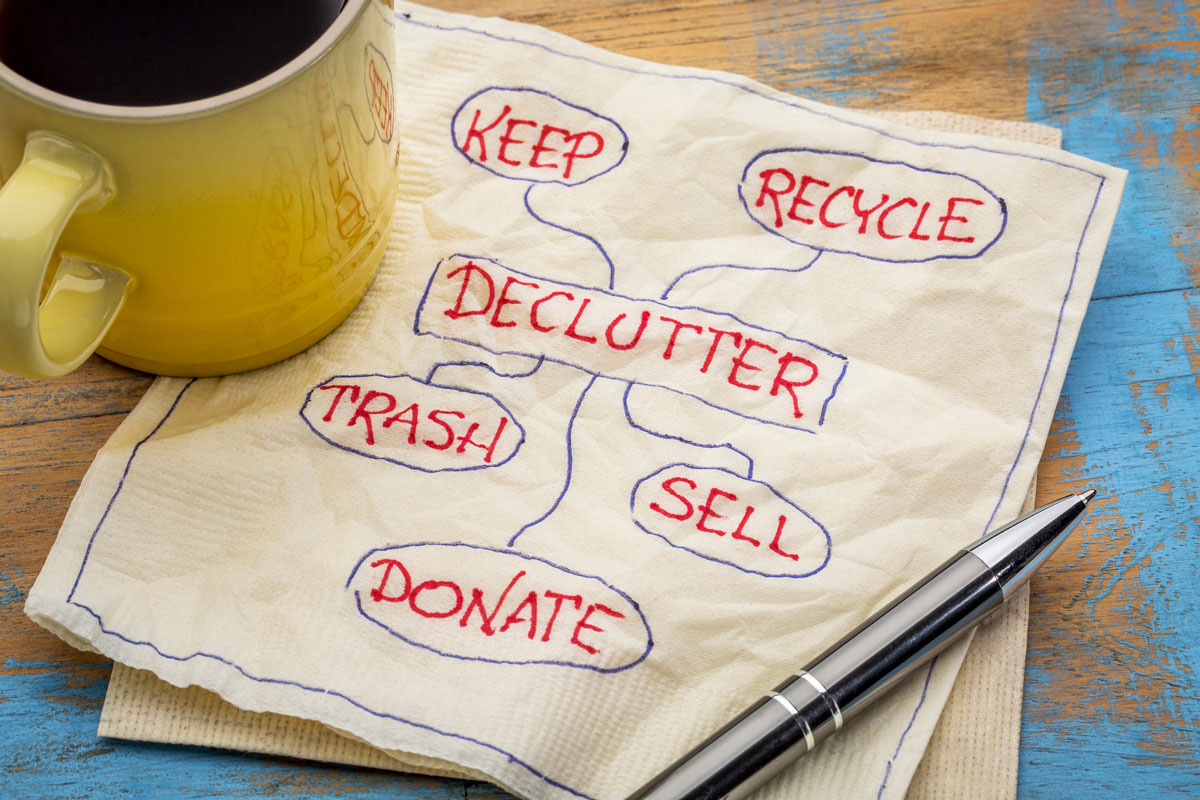This guide is filled with tips on how to declutter your home in a way that reduces stress on your life and keeps each room in your house feeling manageable. If you’ve tried de-cluttering in the past but just seem to accumulate more, this doesn’t mean you have failed! Clutter is inevitable, and when we realize this and create systems to manage the clutter, we will begin to see progress!
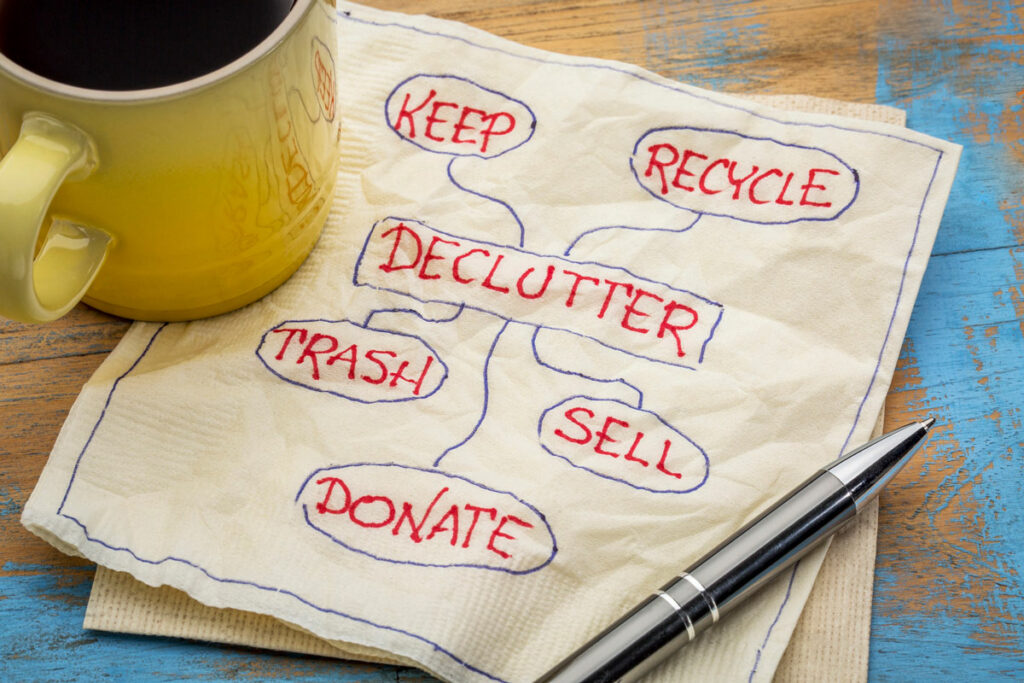
As homesteaders, we’re constantly busy, and often we focus on the “How To” of homesteading: how to grow your garden, how to cook from scratch, the best food preservation method, or raising livestock for food.
But even when we get it under our belts and streamline it, it can be complicated and not always feel like we are living a simple life. This guide is filled with tips to declutter your home to reduce stress and make each room feel manageable.
Note: This blog post has been updated to include multiple podcast episodes on decluttering your home. I’ve had multiple guests over the years come onto the podcast who have shared their wisdom. Each of the podcasts is embedded throughout the post, so download each one and listen to them at your leisure! If one method doesn’t resonate with you, another just might. Here’s to clutter-free homes!
My most recent podcast interview with Dana K White is at the top of this blog post (or the video below). You can listen to podcast Episode #240, Tips on How to Declutter Your Home & Keep It That Way or episode #286 with Tracy below or one of my very first podcasts, episode #17!

Table of Contents[Hide][Show]
Why You Should Declutter Your Home
As a reformed “clutter-addict,” I can relate to feeling overwhelmed when tackling the clutter that has built up in your life. I can also testify to how freeing yourself from clutter improves daily time management on the homestead.
I feel so passionate about the benefits of decluttering that I dedicated a full chapter to simplifying your life with a room-by-room decluttering plan in my book, Home and Hand Made.
We modern homesteaders have a lot to manage. A well-organized home frees up valuable time to prioritize homesteading projects, learn essential homesteading skills, live frugally, and ultimately live a more self-sufficient lifestyle.
I’m excited to collaborate with Dana K White from A Slob Comes Clean and Tracy Lynn from Simple Living Country Gal. Both of these woman have spent time implementing strategies that work for the busy household to maintain the clutter and avoid unnecessary stress.
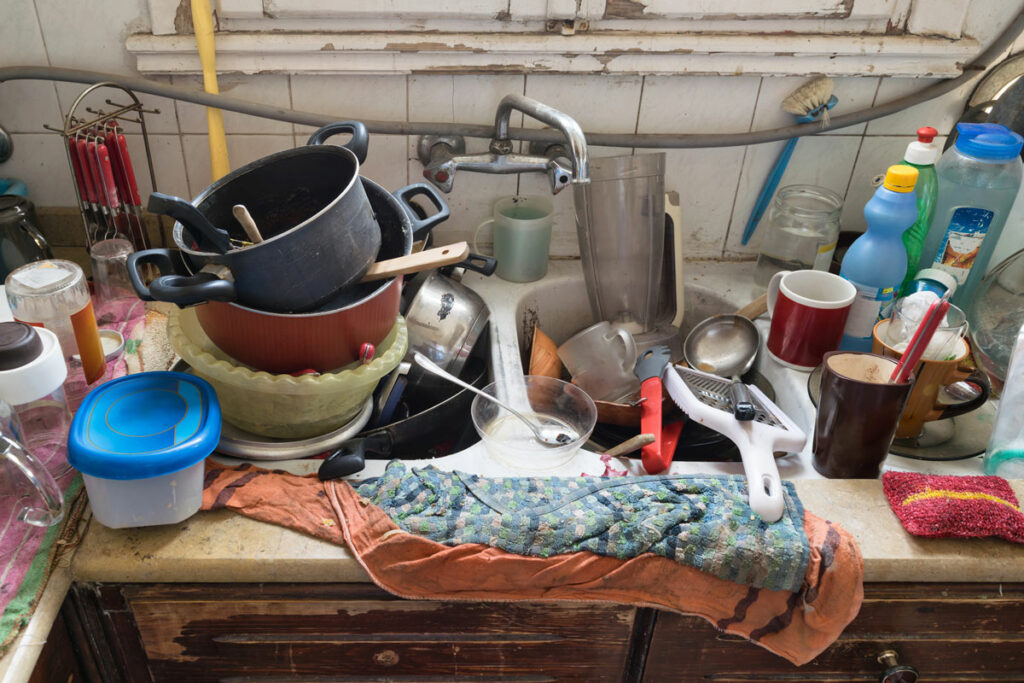
What Is Clutter
Merriam-Webster defines clutter as “to fill or cover with scattered or disordered things that impede movement or reduce effectiveness.” When you declutter your home, it’s important to ask yourself the following questions:
- Do I use it? – Is this a tool or an item that serves a purpose? This doesn’t necessarily mean the item has to perform a practical function. It may be a keepsake you display to reflect on happy memories. If it’s something like that, find a way to make it visible. If the keepsake is packed in a box, it can’t serve its purpose. It’s important to know yourself… Dana shared that she can’t ask this question because she’s a highly creative person and will come up with a reason to keep anything!
- Do I have similar items that do the same thing? – Focusing on tools that accomplish multiple tasks is a game changer. A great example would be multiple uses for a bench knife to simplify tasks and save time.
- Would I immediately replace it if it broke? Learning simple living tips from the Amish can be eye-opening in how many things we can learn to live without.
- Does it belong here? – Sometimes, we have items we would use if they were kept in a different location. If you’re not sure where to store something, think about the first place you would go to look for it. If that area is already full, maybe there’s something in that cupboard or drawer that isn’t used as often that can be moved somewhere else. Or, if there’s not enough space for it, maybe it’s not as important as you think? Remember, we usually have clutter when we have too much “stuff” for the space we have.
- Does it have a home? – If you keep an item that doesn’t have a designated spot, it’s still clutter. Again, this is very home-dependent. If it doesn’t have a home, then you need to give it a home or get rid of something else to make space for it.
- Does it fit my space? – If you use it and it has a home, be honest if it fits within the space (even if it’s small items.) Furniture, for example, provides an obvious purpose. However, if it is too big for your space, it will make your room feel cluttered. If you have storage space available, separate off-season clothes (or other seasonal items) to rotate into those limited spaces as each season allows.
Additionally, you may benefit from asking, “Why do we have so much clutter?”
Our culture conditions us to look at things as needs when they’re really wants. (We discussed this more in-depth in Tips to Spend Less.) The media shows us the greatest and latest to make your life complete with “have to have it” commercials.
Sometimes, we’re trying to fill a need or loss. We might not even realize it, but those new clothes, dishes, pillows, or whatever you tend to bring into your home equates to some need to fit in or “keep up.” Perhaps you felt deprived at one time in your life.
I think these emotional attachments to things significantly contribute to clutter.
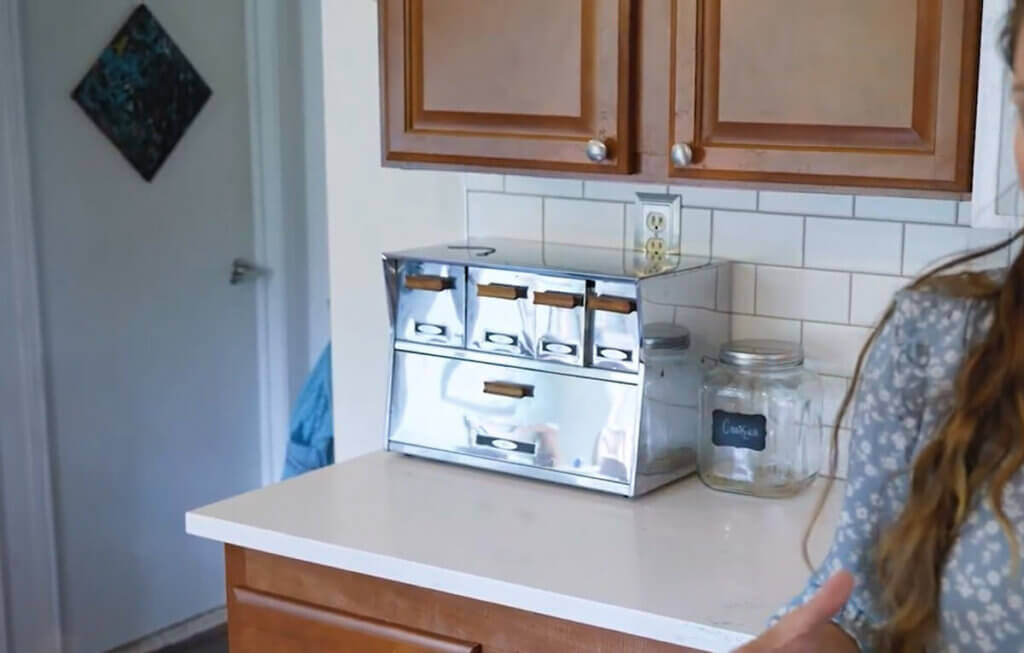
Benefits of Decluttering
Did you know that clutter can lead to stress and depression? After reading this article about the true effects of clutter, I found myself even more motivated to get the clutter out of my house.
Clutter can feel both mentally and visually loud. When I have a cluttered mess, I don’t appreciate and enjoy what I have. Instead I’m distracted by the mess that absorbs time in my day. The more things we have, the more time it takes to maintain them.
In a clutter-free environment, I am relaxed. I don’t waste time looking for things and I’m able to spend less time cleaning and maintaining my home, and I even make healthier choices.
Take a well-stocked pantry, for example. When everything is easy to find, I will reach for healthier ingredient swaps rather than grabbing whatever is convenient.
Tips for Decluttering
Implementing these decluttering tips will make you feel like a professional organizer and ready to conquer your home.
Change Your Mindset
The most important tip is to get out of your head and just get started. I’ve noticed that I procrastinate on a task I don’t enjoy doing and convince myself that it will take much longer than it does. In reality, it doesn’t take long if I just dive in and do it.
Your pace is up to you. Don’t feel disqualified if you don’t have consecutive days to continuously work on decluttering your home. The majority of us don’t have that luxury in our schedules. It all adds to your goal when you commit to just 20 minutes a day (or even a week). And if you don’t have 20 minutes, even 5 minutes here and there will add up!
The key is making real habits that weave into the fabric of your life. Changing your mindset that clutter is non-negotiable will create lasting results with every step you take. Keep your mind on the outcome of the daunting task before you, and envision how good a clutter free home will feel.
A tip that Dana shared is to change your thinking around “containers.” A container isn’t for putting things in; it’s to create a boundary to “contain” the clutter. Just as a fire-fighter contains a fire, to keep it under control, containers are meant to keep our clutter under control.
Don’t get containers just for the sake of putting things in them. Create boundaries by utilizing containers!
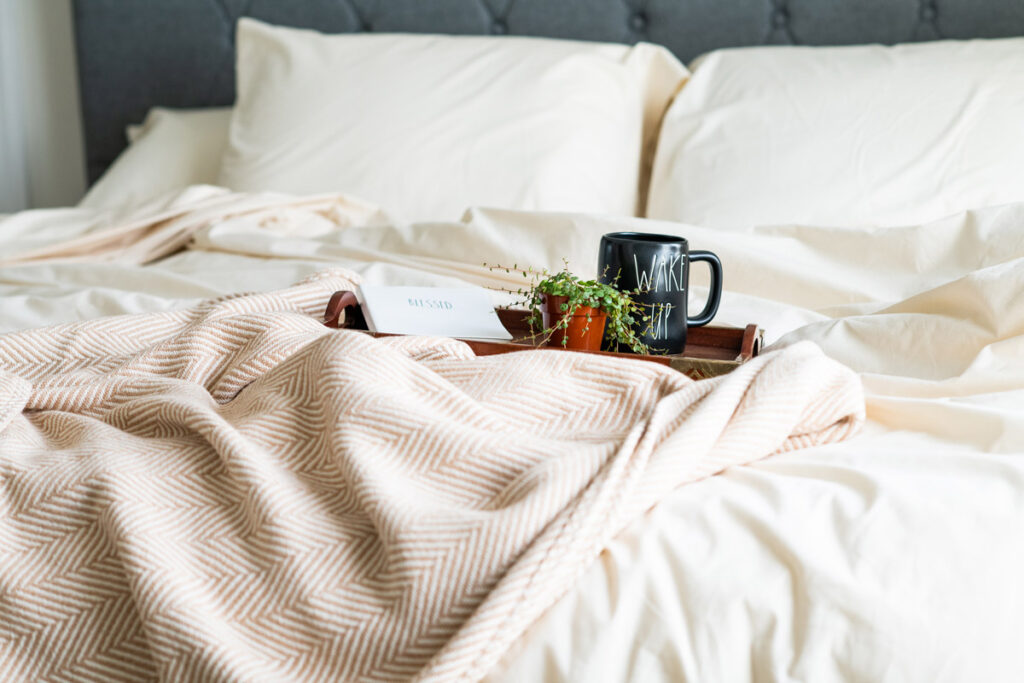
Start Where You Benefit First
One of the most common decluttering questions is, “Where do I start decluttering my house?” Beginning with a room in your home where it most impacts your stress.
The laundry room or storage spaces will not give you the motivational boost that a well-organized kitchen or master bedroom will.
When you can enjoy the benefits of your efforts right away, it will keep you motivated to continue through the house to declutter your living room, family rooms and even get those drawers organized.
Find Rewarding Motivators
It’s no secret that I love podcasts, and rewarding myself with a podcast while I declutter is a great way to get me to start. For you, it might be making a playlist of your favorite music, listening to an audiobook, or treating yourself to a relaxing bath and a cup of tea afterward.
Additionally, it may be helpful to have a “motivation buddy.” Reach out to friends or find a “decluttering group” like Tracy’s Declutter in Minutes Membership Group or find a decluttering coach on Dana’s website. Having like-minded company will help you stay focused and accountable. Seeing and sharing before and after photos provides inspiration and encouragement.
There is something about “dressing the part.” Whether gardening, tending to my animals or following my fitness routine, I dress in clothing that fits the appropriate task. Dressing for decluttering is no exception.
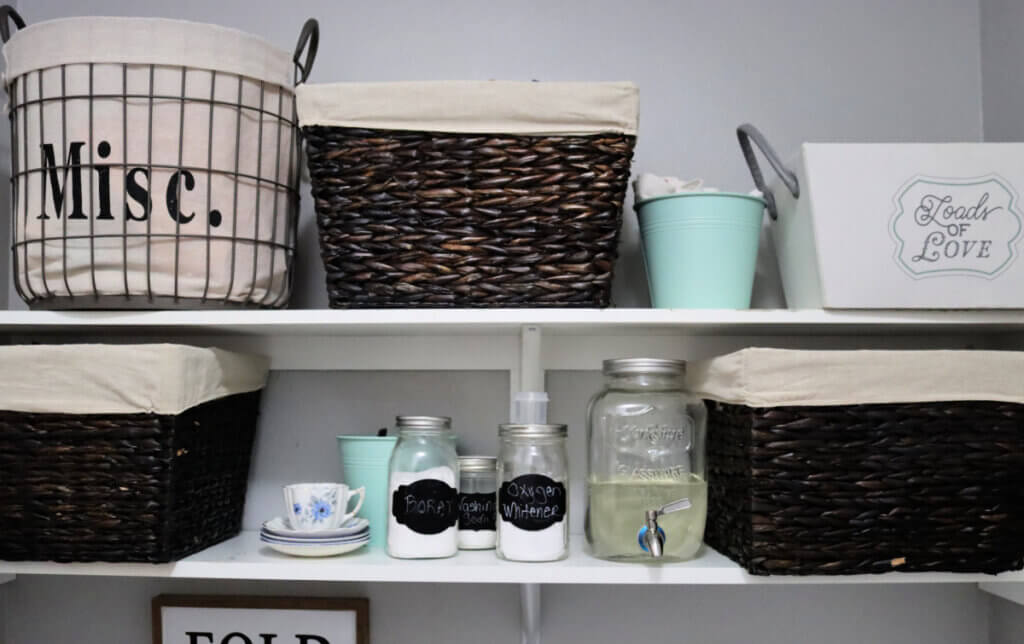
How to Declutter Your Home
I always say, “clutter attracts clutter,” and it’s easy to miss clutter when clutter is everywhere. Don’t just move your things around to create clutter in a new place. The goal is to identify clutter and REMOVE it.
Allocate a Time
Creating a decluttering plan only works when it realistically fits your schedule. Avoid making lofty goals you know you won’t stick to. Identify an area of your home to tackle and list reasonable tasks with tangible completion dates.
Hold yourself accountable for the time you have committed. Even if it’s just 20 minutes, set a timer, work until your time is up, and come back to it according to your schedule. If creating a plan feels overwhelming, Tracy offers a free home decluttering plan to get you started.
Gather Supplies
The beauty of decluttering is that you don’t need any specialized or expensive equipment. Sure, you can buy decorative organizational bins and fancy cleaning tools, but keep in mind that just gives you one more thing to manage and store.
Instead, I encourage you to use everyday household items to make your own non-toxic cleaning supplies and repurpose or reuse items you already have.
You will need bags, boxes or bins to help organize your clutter as you go through them. Paper grocery bags, pillowcases, laundry hampers, shoe boxes or empty shipping boxes work just fine and can be recycled or put back in their designated spot.
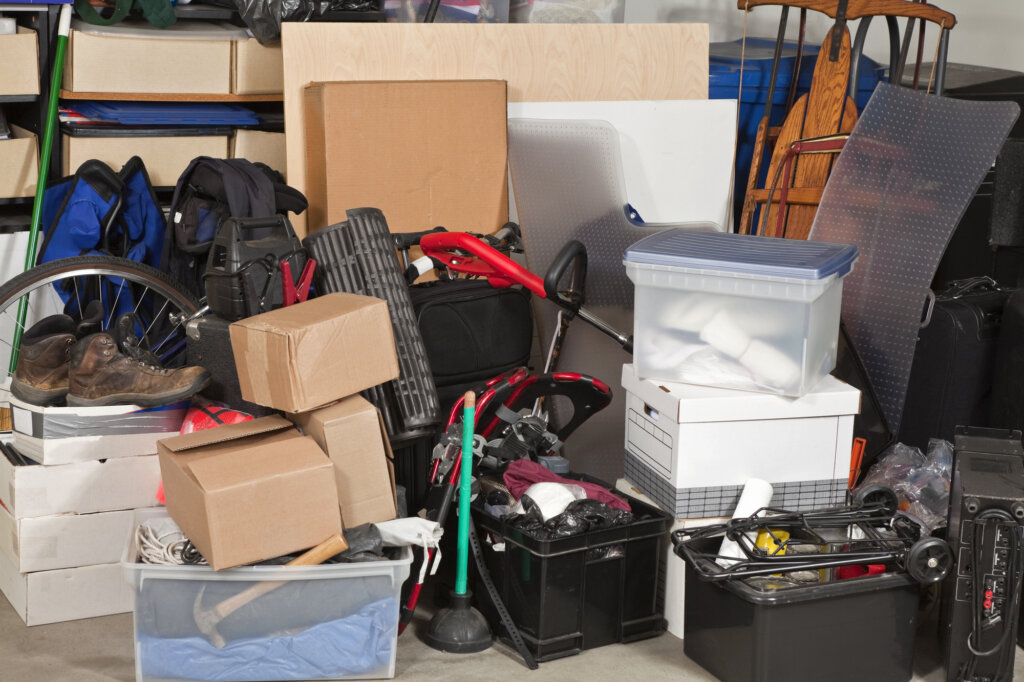
One Room at a Time
Avoid spreading your efforts in multiple places and focus on just one room at a time. Prioritize a room you use the most first, and then start choosing rooms that fit best within the seasons of the year.
Choosing to declutter your garage in the depths of winter may not be as enjoyable as in the spring when you can open the door and allow the warming rays of spring sunshine in.

Tackle the Clutter
In your designated area and during your designated time, use your bags, boxes, baskets, etc., to start collecting and sorting your clutter into three categories.
- Keep – After you have identified that you need the item and it serves a purpose, it must have and fit within it’s designated area. Pro-Tip: If you have identified an item you can repurpose, consider the time commitment needed for the repurposing project. If that time does not realistically fit within your immediate schedule, that item should be re-homed.
- Re-home – Consider a new home for items you no longer use or need but are still useful. You could sell valuable items on Craigslist, Facebook Marketplace, consignment stores, etc. If you don’t need to recover its monetary value, consider donating to a charitable organization such as a thrift store or fundraising garage sales. Pro-Tip: If you consider gifting to friends or family, keep their decluttering goals in mind. Are you potentially adding to their burden of clutter?
- Throw Away – If the clutter does not warrant keeping or re-homing, then throw it away.
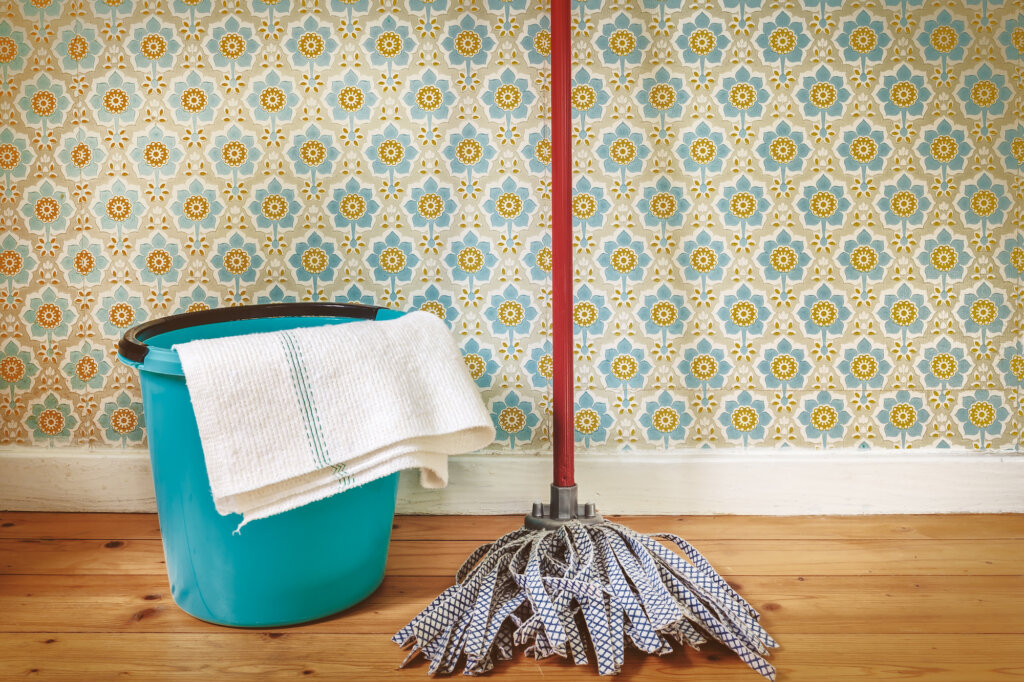
Clean
Before putting the items back in their designated spaces, take the opportunity to do a deep clean of the area. Vacuuming, dusting, mopping, etc., goes so much faster when you don’t have to move everything around.
Once the area is clean, put everything where it belongs. Remember, even if it serves a purpose or does not have a designated area, it’s still clutter. Here is my favorite homemade all-purpose cleaner recipe.
Create a Maintenance Routine
Once everything is in its place, you must create habits to maintain that area daily. Each day, take a laundry basket and go from room to room with it. Inside that basket goes anything that doesn’t belong in that particular room. Then take all of the day’s things that are in the basket and put everything away.
Depending on the size of your home, this task takes an average of 10 minutes and is well worth the investment to maintain your initial decluttering.
Finally, if you bring something new in, take something else out. Even if you have resolved to live more simply, there will be needs that arise, or holidays and special occasions where someone might give you that perfect homesteader gift.
In order to maintain a decluttered home, you will need to identify a limit for what is brought in and be willing to get rid of something to make room for something new.
Verse of the Week
- Podcast #49 Old Fashioned Spring Cleaning Challenge – Psalm 24:4-5
- Podcast #138 12 Tips to Declutter and Organize Your Homestead – Philippians 4:8
Resources
- Tracy’s decluttering plan: Declutter in Minutes
- Dana’s book, Jesus Doesn’t Care About Your Messy House
